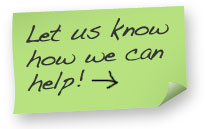By Ken Rosen
Brand is hot.
So we’ve been doing intense thinking about how strong Branding improves performance. The problem is the meaning of Brand depends on the context.
Brand = Visuals: 10 years ago—and today in many visual design firms—Brand equals visuals: logo, color scheme, package design. This group might say, “the Brand reflects the company, stands out, and is consistent on the web and in print.” While a key component, this is far too narrow and provides little guidance to employees on behavior.
Who does this well? Anyone with good brand police, but certainly Target, Wal-Mart, Virgin, Apple, the New York Times, and many, many more.
Brand = Company: Among other groups, brand is a synonym for “company,” as in “the brand offers many promotions in order to get customers.” This ties more to action, but since it simply defines anything the company does as its brand, it again doesn’t provide much guidance to employees.
Who does this well? Everyone. This definition is so broad, it is effectively meaningless.
Brand = Reason to Buy: If you follow Fred Burt of Siegel + Gale, you get a more meaningful definition: Brand is a reason to buy. Now we’re getting somewhere. Brand is what a company does that, at the moment of decision, causes a consumer to purchase a product or service from that company rather than someone else. It is a customer mindset created by all a company does. The challenge for me is not that this is untrue. It’s that it is not actionable for the average employee making 100 decisions a day about how to do their job.
Who does this well? Wal-Mart (price), Toyota in the 90s (quality), Apple (iTunes easy integration).
Brand = What Others Think: To a vocal group in social media circles (think: Twitter chats), brand is beyond company control. These groups say, “You don’t own your brand. Your brand is nothing more than the conviction about your company by the market.” An interesting point expressed by some smart people, but for me it gives up on proactive work to build brand as a valuable asset.
Who does this well? In a sense, you can’t do this well, because advocates say it is out of your control. But companies with powerful external perceptions, good and bad, include EMC (enterprise storage), Kellogg’s (breakfast carbs), Microsoft and Google (behemoths in their ecosystem), General Motors (on the ropes trying to come back), BP (sigh).
It’s not so much that I disagree with the ideas above, but they are not actionable enough.
Words are useful when they drive us: not only customers seeing a reason to buy, but also employees who individually and collectively perform better.
Brand = Promise: We see Brand as a promise of how you’ll behave, even when that behavior is difficult. “Difficult” here means expensive, embarrassing, or even (temporarily) unprofitable. Why? Because this view is the way to gain both that coveted place in the customer’s mind and drive high-performance employee behavior. Whether explicitly or implicitly, this Brand promise covers everything: the way you promote yourself, design products, and deliver quality. How you serve customers when they’re happy…and when they’re unhappy. How you protect your customers…and also shareholders and the environment. How you grow and the partnerships you make. The promise even suggests how you make decisions about new actions.
“Difficult” here means expensive, embarrassing, or even (temporarily) unprofitable. Why? Because this view is the way to gain both that coveted place in the customer’s mind and drive high-performance employee behavior. Whether explicitly or implicitly, this Brand promise covers everything: the way you promote yourself, design products, and deliver quality. How you serve customers when they’re happy…and when they’re unhappy. How you protect your customers…and also shareholders and the environment. How you grow and the partnerships you make. The promise even suggests how you make decisions about new actions.
Who does this well (or tries hard)? Costco (80th percentile quality at 60th percentile price), Google (Index world’s content and don’t be evil), Nike (support athletes), Amazon (convenient variety at reasonable price), Rolex and Tiffany (the “best”), Ikea (mid-quality style at aggressive prices), Odwalla (healthy).
We embrace the controversy around Brand and hope you’ll join the debate either in comments below or by engaging directly via email (krosen at PerWorks dot com) or Twitter. But we encourage you to at least add this view of Brand as Promise to your discussions.
Takeaways
- Redefine Brand as your promise about how you will behave…even when it is difficult.
- Help all know the details of this promise to ensure management and employees understand how to apply it.
- Incorporate your brand promise into employee onboarding, management discussions, and performance appraisals.
- Reward and celebrate employees who keep your promise throughout your operations.
- Once engrained, celebrate your promise publicly…but be sure you walk the talk. Whether in love or commerce, people are unforgiving of those who do not keep their promises.






